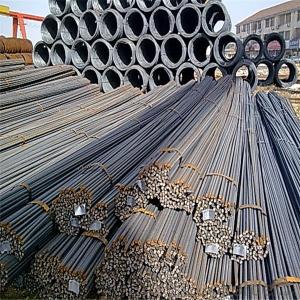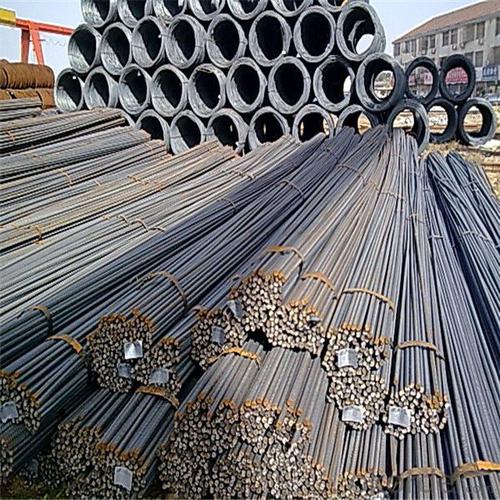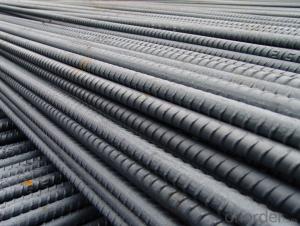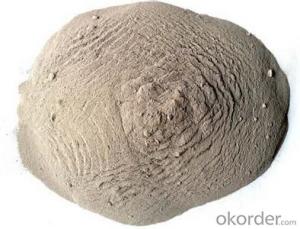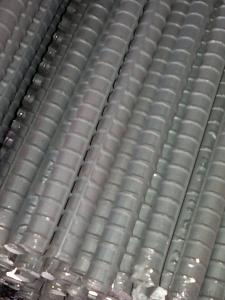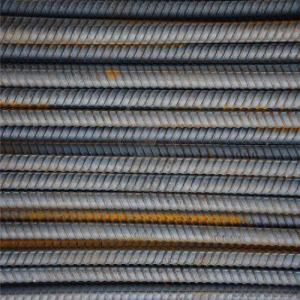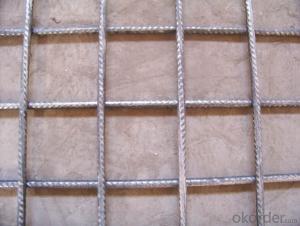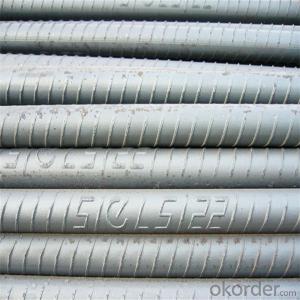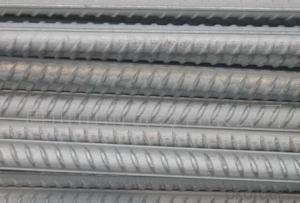Reinforced concrete iron rod for building construction
- Loading Port:
- China main port
- Payment Terms:
- TT OR LC
- Min Order Qty:
- 100 m.t.
- Supply Capability:
- 18000 m.t./month
OKorder Service Pledge
OKorder Financial Service
You Might Also Like
Specification
Rebar has ridges that bind it mechanically to the concrete with friction, it can still be pulled out of
the concrete under high stresses, an occurrence that often precedes a larger-scale collapse of the
structure. To prevent such a failure, rebar is either deeply embedded into adjacent structural members,
or bent and hooked at the ends to lock it around the concrete and other rebars. This first approach increases
the friction locking the bar into place while the second makes use of the high compressive strength of concrete
Our Advantage: High quality steel products from 1 class mills in China
Reasonable price
Professionalism of the products
On-time delivery
Complete documents and certificates
Sincere service to meet our clients' requirements
Product Description :
Chemical composition (%): | Steel | C | Si | Mn | P | S | Ceq | ||||
HRB335 |
0.25 |
0.80 |
1.60 |
0.045 |
0.045 | 0.52 | |||||
HRB400 | 0.54 | ||||||||||
HRB500 | 0.55 | ||||||||||
Mechanical properties | Steel | Rel/ MPa | Rm/ MPa | A/ % | Agt/ % | ||||||
≥ | |||||||||||
HRB335 | 335 | 455 | 17 |
7.5 | |||||||
HRB400 | 400 | 540 | 16 | ||||||||
HRB500 | 500 | 630 | 15 | ||||||||
Package: | Standard export packing or as customer's request | ||||||||||
Application: | Construction, building, bridge, road. ect | ||||||||||
Payment terms | 1).100% irrevocable L/C at sight. | ||||||||||
Delivery time | 15-30 days after receipt of L/C or deposit by T/T | ||||||||||
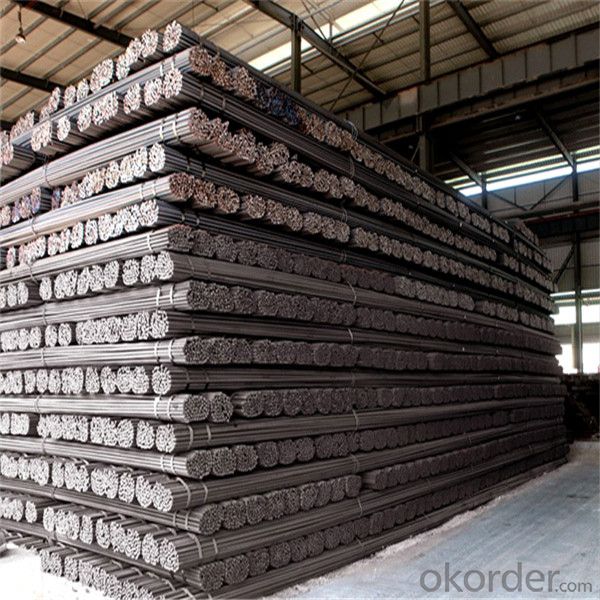
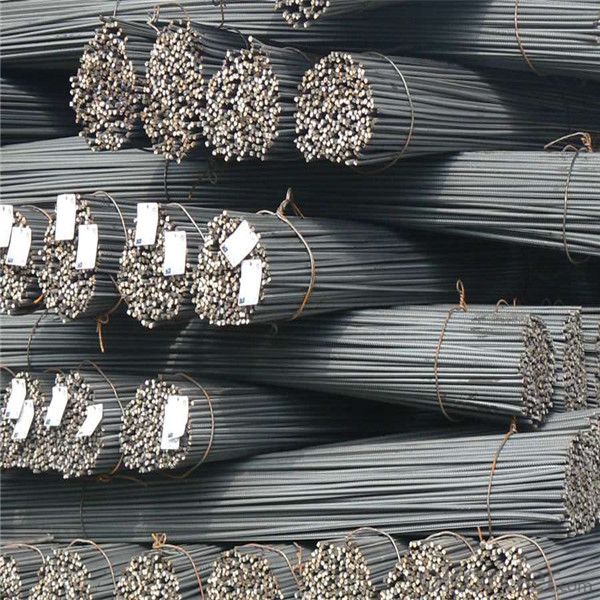
Packing:
In bundles, each bundle weight 3.5 tons. Load by container or by bulk verssel.

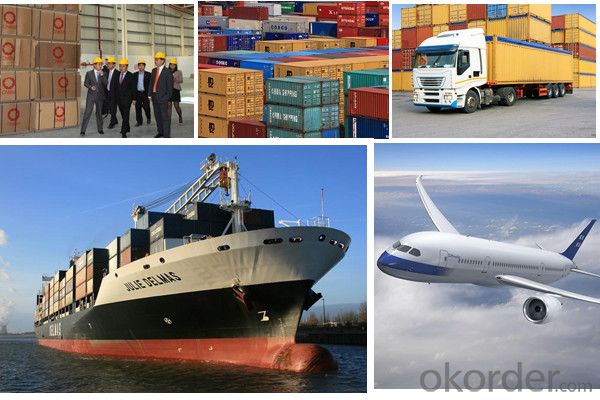
Our service
(1) We cooperate with famous factories with advanced equipment and well trained workers.
(2) We can provide factory price with trading company service.
(3) We continuously work on the improvement of our processes, guaranteeing consistently high standards
of quality to keep none compensation.
(4) We guarantee 24 hours response and 48 hours solution providing service.
(5) We accept small order quantity before formal cooperation.
(6) We deliver the agreed quality at the agreed time, reacting to changes in customer wishes in a flexible way.
(7) Due to our volume and selling power, we have excellent freight rates with shipping lines.
(8) We strive to always be fair and honest in our dealings with customers.
(9) We strive to work together with customers to achieve much more than we can achieve alone.
(10) Through our passion and commitment we aim to be a market leader in all our key markets. To maintain
our position as market leader we must continue to add value in all that we do.
FAQ:
1.Q: What's your MOQ(minimum order quantity)?
A: One full container, mixed acceptable .
2. Q: What's your packing methods?
A: Packed in bundle or bulk ..
3. Q: How can I buy CNBM products in my country?
A:Please send us an inquiry or email ,we will reply to you if there is distributor in your country
4. Q: Can we visit your factory?
A: Warmly welcome. Once we have your schedule, we will arrange the professional sales team to follow up your case.
5. Q: How long does it take to get the product if i place an order?
A:With the process of your requirements,we will pack and deliver in 3-7 days. If it is by sea shipment,it will take 15-45 days depending on different locations
- Q: Can steel rebars be used in energy-efficient buildings?
- Yes, steel rebars can be used in energy-efficient buildings. Steel rebars are commonly used in construction to provide reinforcement to concrete structures. In energy-efficient buildings, steel rebars can be integrated into the design to enhance the structural integrity and durability of the building, while also minimizing energy consumption. Additionally, steel rebars can be recycled, making them a sustainable choice for energy-efficient construction.
- Q: Are steel rebars suitable for use in structures with high resistance to chemicals?
- Structures requiring high chemical resistance generally cannot utilize steel rebars. Although steel is a robust and durable material, its vulnerability to corrosion when in contact with certain chemicals makes it unsuitable. Acids, alkalis, and chlorides, for example, can corrode steel rebars, compromising the structural integrity of the building or structure. To guarantee chemical resistance, alternative materials such as stainless steel rebars or fiber-reinforced polymer (FRP) rebars are often employed. Stainless steel rebars possess a higher chromium content, which grants them greater corrosion resistance than regular steel rebars. On the other hand, FRP rebars, being non-metallic, do not corrode, making them a viable choice for structures exposed to harsh chemical environments. The selection of rebars for structures demanding high chemical resistance relies on the specific chemicals involved and the degree of exposure. Consulting with engineers and specialists who can assess the chemical environment is essential to determine the most suitable rebars, ensuring the long-term durability and safety of the structure.
- Q: How do steel rebars contribute to the load-bearing capacity of concrete slabs?
- The load-bearing capacity of concrete slabs is improved through various mechanisms by steel rebars. Firstly, they increase the tensile strength of the concrete. While concrete is renowned for its compressive strength, it lacks the ability to resist tensile forces. By incorporating steel rebars into the concrete, a reinforced structure is formed, capable of withstanding both compressive and tensile stresses. This effectively prevents the concrete from cracking or failing when subjected to heavy loads. Secondly, steel rebars aid in the even distribution of loads across the concrete slab. When a load is applied to the slab, it tends to concentrate at specific points, leading to stress concentrations. However, the presence of rebars facilitates the spreading of the load over a larger area, reducing stress on individual points and enhancing the overall load-bearing capacity of the slab. Additionally, steel rebars serve as a barrier against crack propagation in concrete slabs. If a crack occurs, the rebars act as reinforcement, holding the cracked sections together and preventing the crack from expanding further. This ensures the structural integrity of the slab is maintained, safeguarding its load-bearing capacity. In conclusion, steel rebars are indispensable in bolstering the load-bearing capacity of concrete slabs. They provide tensile strength, ensure even load distribution, and inhibit crack propagation. By incorporating rebars, the durability and ability of concrete structures to withstand heavy loads are significantly improved, making them indispensable components in construction projects.
- Q: Thread steel is embroidered after rain. Can it be used as reinforcing steel?
- There are two kinds of commonly used classification methods of thread steel: one is to shape classification, according to different space shapes and transverse rib rib for classification or type, such as the British Standard (BS4449), the thread steel is divided into type I and type ii. This classification mainly reflects the tightening performance of the threaded steel. The two is the performance of classification (class), for example, China's current implementation of standards, (G B1499.2-2007) for steel wire for 1499.1-2008), according to the strength (tensile strength yield point / steel) will be divided into 3 levels; the Japanese industrial standard (JI SG3112), according to the comprehensive performance of the steel branch for the 5 species; the British Standard (BS4461), also provides some level of performance test of thread steel. In addition, the thread steel can be classified according to the use, such as reinforced concrete, ordinary steel bars and reinforced concrete bars for heat treatment.
- Q: How do steel rebars provide flexibility to concrete structures?
- Concrete structures can benefit from the flexibility provided by steel rebars in multiple ways. Firstly, the addition of steel rebars reinforces the concrete, enhancing its tensile strength. While concrete is strong in compression, it is weak in tension. By incorporating steel rebars, the concrete becomes more resistant to bending and cracking, as the rebars can absorb the tensile forces that would otherwise cause failure. This reinforcement enables concrete structures to withstand heavier loads and offers flexibility by preventing excessive deformation or collapse. Secondly, steel rebars can be utilized to construct a reinforced concrete frame, which boosts the overall flexibility of the structure. When embedded in the concrete, the rebars form an interconnected network of elements that distribute applied loads more evenly. This network acts as a flexible skeleton capable of adapting to various stresses, such as temperature changes, ground movements, or dynamic forces. As a result, the structure can accommodate minor movements or vibrations without sustaining significant damage. Additionally, steel rebars can be strategically positioned in areas where additional flexibility is required. For instance, in regions prone to seismic activity, rebars can be concentrated in critical areas like building joints or corners. This placement helps dissipate the energy generated during an earthquake, allowing the structure to deform and absorb seismic forces without collapsing. The flexibility provided by steel rebars enhances the seismic resistance of the concrete structure. To summarize, steel rebars contribute to the flexibility of concrete structures by increasing their tensile strength, creating a reinforced concrete frame, and allowing for strategic placement to enhance specific areas of flexibility. This flexibility enables concrete structures to withstand diverse loads, adapt to various stresses, and improve their overall strength and durability.
- Q: How do steel rebars contribute to the ductility of a structure?
- Steel rebars contribute to the ductility of a structure by providing reinforcement and increasing its ability to withstand deformation without breaking. The rebars act as a skeleton within the concrete, allowing it to flex and absorb stresses, making the structure more resilient to external forces such as earthquakes or high winds.
- Q: Can steel rebars be used in structures with high resistance to creep?
- Yes, steel rebars can be used in structures with high resistance to creep. Steel rebars are commonly used in reinforced concrete structures and provide strength and durability to the overall structure. Creep is the gradual deformation of a material under constant stress over time. While steel does exhibit some creep, it is considered to have a low creep rate compared to other materials such as concrete or timber. Additionally, the use of rebars in reinforced concrete structures can help distribute the load and minimize the effects of creep by adding stiffness and reducing the overall stress on the concrete. Therefore, steel rebars can be effectively used in structures with high resistance to creep when designed and installed properly.
- Q: How are steel rebars used in bridge construction?
- Steel rebars are used in bridge construction to reinforce and strengthen the concrete structures. These rebars are embedded within the concrete to enhance its tensile strength, thereby preventing cracks and ensuring the bridge's overall stability and durability.
- Q: What is the impact of steel rebars on the overall carbon footprint of a building?
- The overall carbon footprint of a building is significantly influenced by the presence of steel rebars. This is because the production of steel involves the consumption of high amounts of energy and the release of substantial greenhouse gas emissions, particularly carbon dioxide. The carbon footprint of a building is further affected by activities such as the extraction and processing of iron ore, as well as the manufacturing and transportation of steel rebars. The extent to which steel rebars are used in a building also plays a role in its carbon footprint. The more steel rebars that are utilized, the higher the carbon footprint will be. The quantity of steel rebars required is determined by factors such as the size and complexity of the structure, as well as specific design requirements. However, it is worth noting that steel rebars are an essential component of reinforced concrete, which is widely used in construction due to its strength and durability. Reinforced concrete ensures the structural integrity and longevity of a building, consequently contributing to its safety. While steel rebars contribute to the building's carbon footprint, they also play a critical role in constructing secure and resilient structures. To mitigate the carbon footprint associated with steel rebars, several strategies can be employed. One approach is to utilize recycled steel rebars, which significantly reduces the energy consumption and emissions associated with steel production. Additionally, optimizing the design and construction process can help minimize the overall amount of steel required, thereby reducing the carbon footprint. Furthermore, alternative materials such as fiber-reinforced polymers (FRPs) are being developed as substitutes for steel rebars. FRPs have lower carbon footprints since they are made from materials like fiberglass or carbon fiber, which have lower emissions during production. However, the use of FRPs is still limited, and further research and development are needed to enhance their viability as a mainstream alternative. In conclusion, the presence of steel rebars has a significant impact on the carbon footprint of a building due to the energy-intensive production process and emissions associated with their extraction, manufacturing, and transportation. Nevertheless, their crucial role in providing structural integrity and durability should not be overlooked. Efforts to reduce the carbon footprint of steel rebars include the use of recycled materials, the optimization of designs, and the exploration of alternative materials like FRPs. Ultimately, a comprehensive approach that considers both the environmental impact and the structural requirements of a building is necessary to minimize the carbon footprint associated with steel rebars.
- Q: Do steel rebars increase the overall weight of a structure?
- Yes, steel rebars do increase the overall weight of a structure. Rebars are typically added to reinforce concrete structures, providing tensile strength to counteract the concrete's weakness in handling tension forces. Steel rebars are made of steel, which is a dense and heavy material. When incorporated into a structure, the weight of the rebars adds to the total weight of the construction. However, the additional weight is usually negligible compared to the overall weight of the structure, especially in large-scale projects. The benefits of using steel rebars in terms of structural integrity and durability far outweigh the minimal increase in weight they contribute.
Send your message to us
Reinforced concrete iron rod for building construction
- Loading Port:
- China main port
- Payment Terms:
- TT OR LC
- Min Order Qty:
- 100 m.t.
- Supply Capability:
- 18000 m.t./month
OKorder Service Pledge
OKorder Financial Service
Similar products
Hot products
Hot Searches
Related keywords
